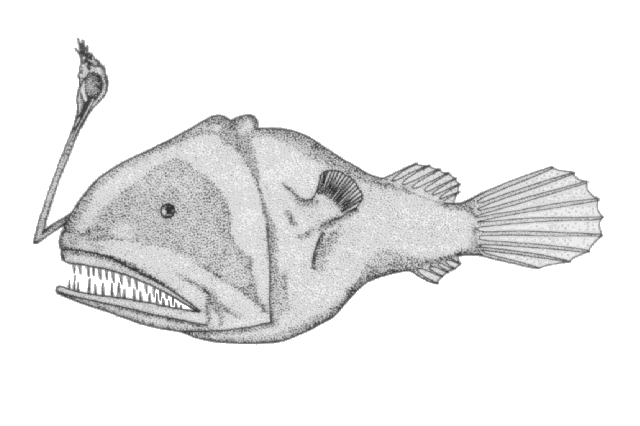| Oneirodidae (Dreamers) |
| 10.2 cm SL (male/unsexed) |
|
bathypelagic; depth range - 1250 m |
| Western Central Pacific: Papua New Guinea. Eastern Central Pacific: Gulf of Panama. |
|
Dorsal soft rays (total): 6-8; Anal soft rays: 5-6. Distinguishing characteristics of metamorphosed female: esca with single elongate internally pigmented anterior appendage, less than one-fourth to nearly one-third length of escal bulb; absence of medial escal appendages; posterior escal appendages with swollen basal portion and compressed distal crest, posterior filament or filaments and pair of anterior lobes each with numerous filaments; filamentous anterolateral escal appendage on each side; absence of basal series of filaments; total number of teeth in upper jaw 21-45, lower jaw with 26-42 teeth; ratio between number of teeth in upper jaw to lower jaw teeth 0.78-1.30; vomerine teeth 4-7; length of illicium 20.1-41.3% SL; escal bulb width 2.1-6.3% SL (Ref. 86949). |
|
|
Not Evaluated
(Ref. 96402)
|
| harmless |
|
Source and more info: www.fishbase.org. For personal, classroom, and other internal use only. Not for publication.
Page created by Jen, 05.08.02,
php script by kbanasihan 06/09/2010 ,
last modified by
dsantos, 20/08/10

